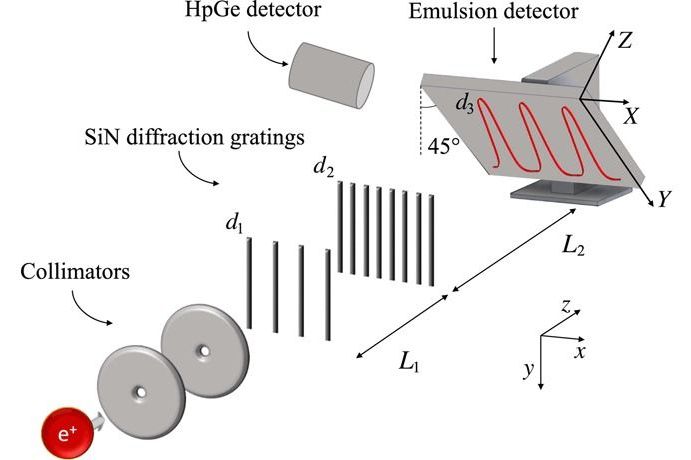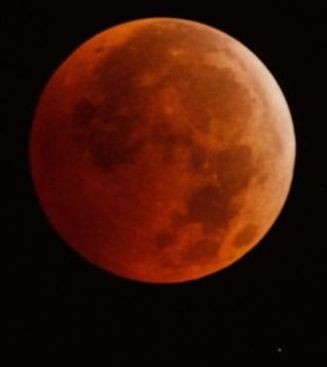Positrons traverse two circular 2-mm-wide collimators 10.2 cm apart. The interferometer is composed of two SiN diffraction gratings with periodicity d1 and d2, respectively, separated by L1 = (118.1 ± 0.2) mm. Interference fringes with d3 periodicity are expected at L2 = (576 ± 5) mm. The emulsion is tilted so that the Y axis in the reference frame of the emulsion surface (X, Y) forms a 45° angle with the y axis of the laboratory. Gamma rays (511 keV) from positron annihilation in the emulsion are monitored with a high-purity germanium (HpGe) detector for rate measurement.
Courtesy of ScienceMag.org








